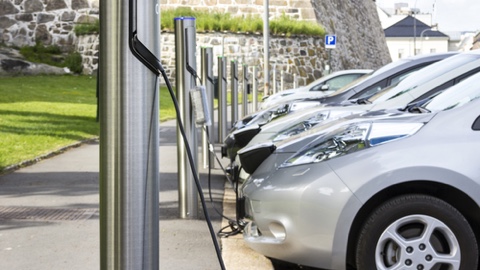
Researchers at the University of Warwick, United Kingdom (UK) have demonstrated that vehicle-to-grid (V2G) technology can be used to take enough energy from idle electric vehicle (EV) batteries to be pumped into the grid and power buildings – not only without damaging the batteries, but also potentially improving vehicle battery life by around ten percent over a year.
Dr. Kotub Uddin, working with the university’s International Manufacturing Centre (WMG) Energy and Electrical Systems group and Jaguar Land Rover, has spent two years analyzing lithium ion batteries used in commercially available EVs. He was able to create one of the most accurate battery degradation models existing to date which predicts battery capacity and power fade over time, under various ageing acceleration factors — including temperature, state of charge, current and depth of discharge. Using this degradation model, they developed a ‘smart grid’ algorithm, which intelligently calculates how much energy a vehicle requires to carry out daily journeys, and, how much energy can be taken from its battery without negatively affecting it, or even improving its longevity.
It has previously been thought that extracting energy from EVs with V2G technology causes their lithium ion batteries to degrade more rapidly. The research showed, however, that battery degradation is more complex and that taking excess energy from an idle EV to power the grid actually keeps the battery healthier for longer.
Dr. Uddin stated, “these findings reinforce the attractiveness of vehicle-to-grid technologies to automotive Original Equipment Manufacturers: not only is vehicle-to-grid an effective solution for grid support — and subsequently a tidy revenue stream — but we have shown that there is a real possibility of extending the lifetime of traction batteries in tandem. The results are also appealing to policy makers interested in grid decarbonization.”


